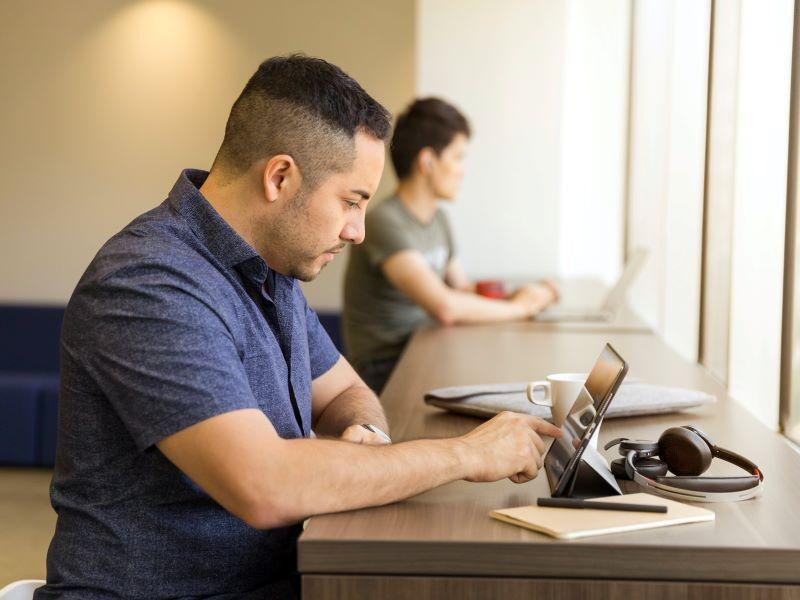I recently completed a year-long master’s degree in marketing, during which 90 per cent of my teaching sessions were online.
I arrived at the University of Edinburgh a few weeks into the first semester, so I managed to attend only a few in-person tutorials before the December 2020 lockdown was announced, which continued until the end of semester two in April 2021.
So I know from personal experience an issue that plagues students who are learning online – the anxiety felt about breakout rooms. Lily Whear, from UK student media outlet The Tab, puts it perfectly: “The mere mention of [breakout rooms] will make your palms go clammy, the colour drain from your face, and your stomach go queasy. They are the bane of every Zoom University student’s existence.”
- Group work: improving communication, participation and dynamics
- Guiding students to learn from each other through peer feedback
- How to foster collaboration among students trained to compete
After all, in physical classes, students can see the people sitting nearby and can expect in advance that they will engage in group discussions with some of them. Students often consciously choose to sit near close friends or people they are comfortable with.
Much of the anxiety of a breakout room comes from not knowing who one’s randomised group members will be. This feeling is exacerbated because students may not have had the chance to become familiar with most of their course mates, as they would have in traditional settings. And unlike physical class, they have no idea when a lecturer might randomly “visit” their breakout room.
Here are a few steps lecturers can take to help make students feel more comfortable in breakout rooms:
1. Build rapport among students
Ahead of splitting students into groups, it is worth hosting sessions designed purely for students to get to know each other a little, either inside or outside class, physically or virtually. This will hopefully reduce their anxiety about interacting in breakout rooms regardless of who they are grouped with.
Teachers should also regularly encourage students to have their audio and video on if possible, particularly when they are working in smaller groups. There may be a few students who tend to “hide” or “stay invisible”, leaving others in the room feeling demotivated or awkward. If for whatever reason students do not or cannot turn on their audio or video, it is worth reminding them that they can participate by sending messages via chat.
2. Focus on one or two specific, focused and inspiring tasks to complete under 10 minutes
One thing I found frustrating as a student was when teachers gave three to four complicated tasks to discuss in breakout rooms. Students often cannot see the slides with discussion prompts once they are actually in breakout rooms because of the limitations of virtual learning environments (VLEs), so things quickly get muddled or forgotten.
It is more effective to discuss one to two specific, focused prompts within a short time span. For example, “How is x impacted by y, and what are some real-life examples of these? Discuss within 10 minutes.” Discussion topics should be enjoyable and inspiring so students want to contribute their ideas and hear others.
Other than discussions, breakout rooms should feature other interactive activities such as creating a poster or a slide together via software such as Microsoft Sharepoint, Google Drive or Canva.
3. Limit the use of breakout rooms
Consider how much value breakout room activities will actually bring to a session – are they necessary for every single tutorial? My experience was that breakout rooms were sometimes a waste of everyone’s time because of the technical issues that come with them.
Instead of using breakout rooms during every lesson, could this perhaps be reduced to every other week, when there is something really worth working on in small groups? Instead of relying on breakout rooms, could educators introduce more other innovative ways of teaching: discussion boards, quizzes on Kahoot or Menti, games or other creative collaborative projects?
4. Ask for constructive feedback from students
Even now, online learning is still relatively new for most people, so it is important to ask for regular and honest feedback from students, with the option to remain anonymous. Ask your students what they prefer when it comes to breakout rooms and other online learning activities.
One lecturer of mine sought live feedback through Mentimeter on what she could improve on, giving students five minutes to answer anonymously. She then addressed the issues that popped up on the screen, discussed them with the whole class and confirmed our preferences, and consequently made improvements to her future lessons.
Teaching during the pandemic is no mean feat, and I applaud the efforts of all university academics and staff who made such huge, rapid changes in terms of delivering education online. Many universities plan to keep practising online or hybrid teaching longer term, and there seems to be a brighter future for remote learning since the pandemic thanks to many valuable lessons learned. But ongoing improvements are needed to make sure that online learners receive the same quality of education as traditional learners.
Ari Badlishah is digital engagement officer in the online learning marketing team at the University of Edinburgh.
If you found this interesting and want advice and insight from academics and university staff delivered directly to your inbox each week, sign up for the THE Campus newsletter.




comment